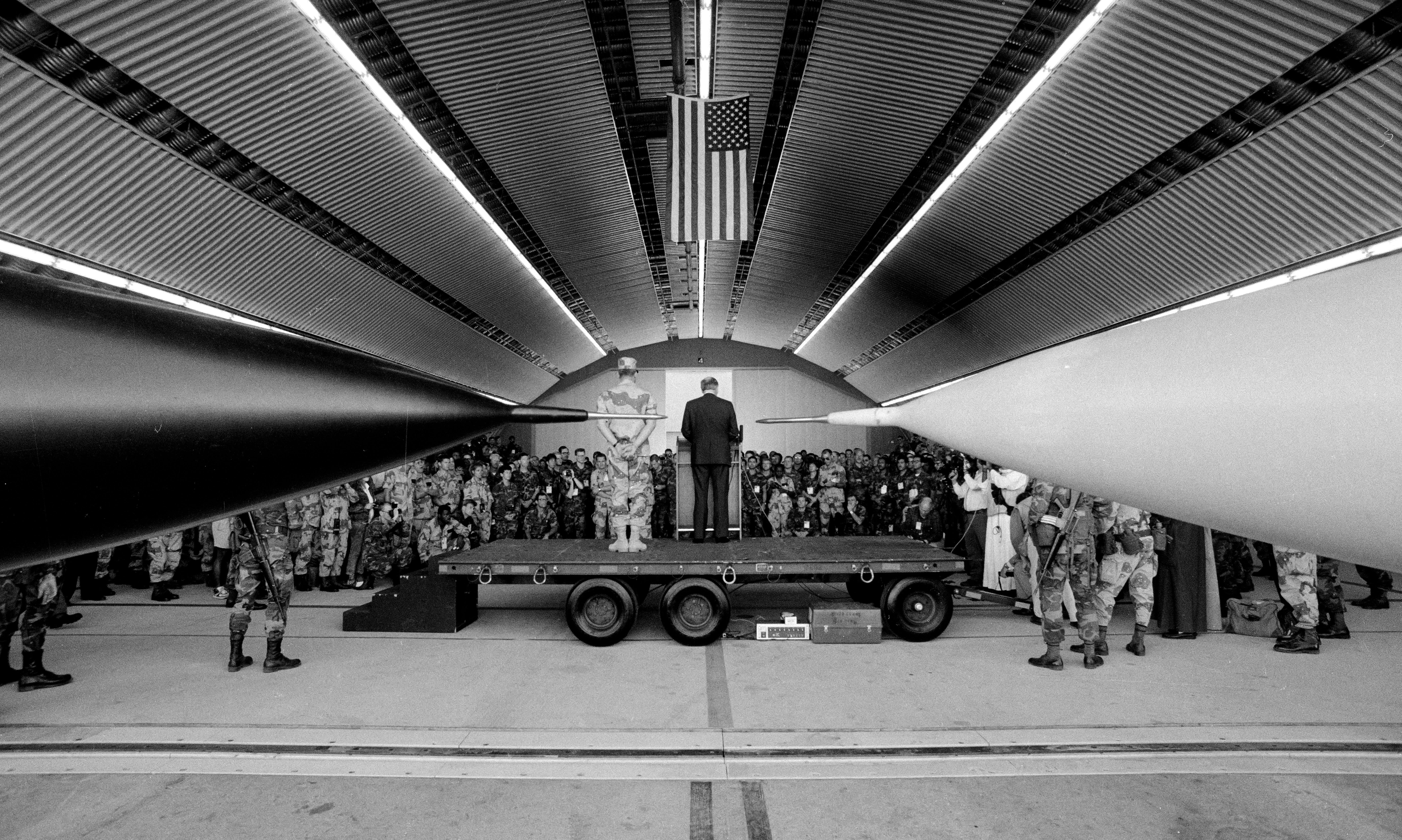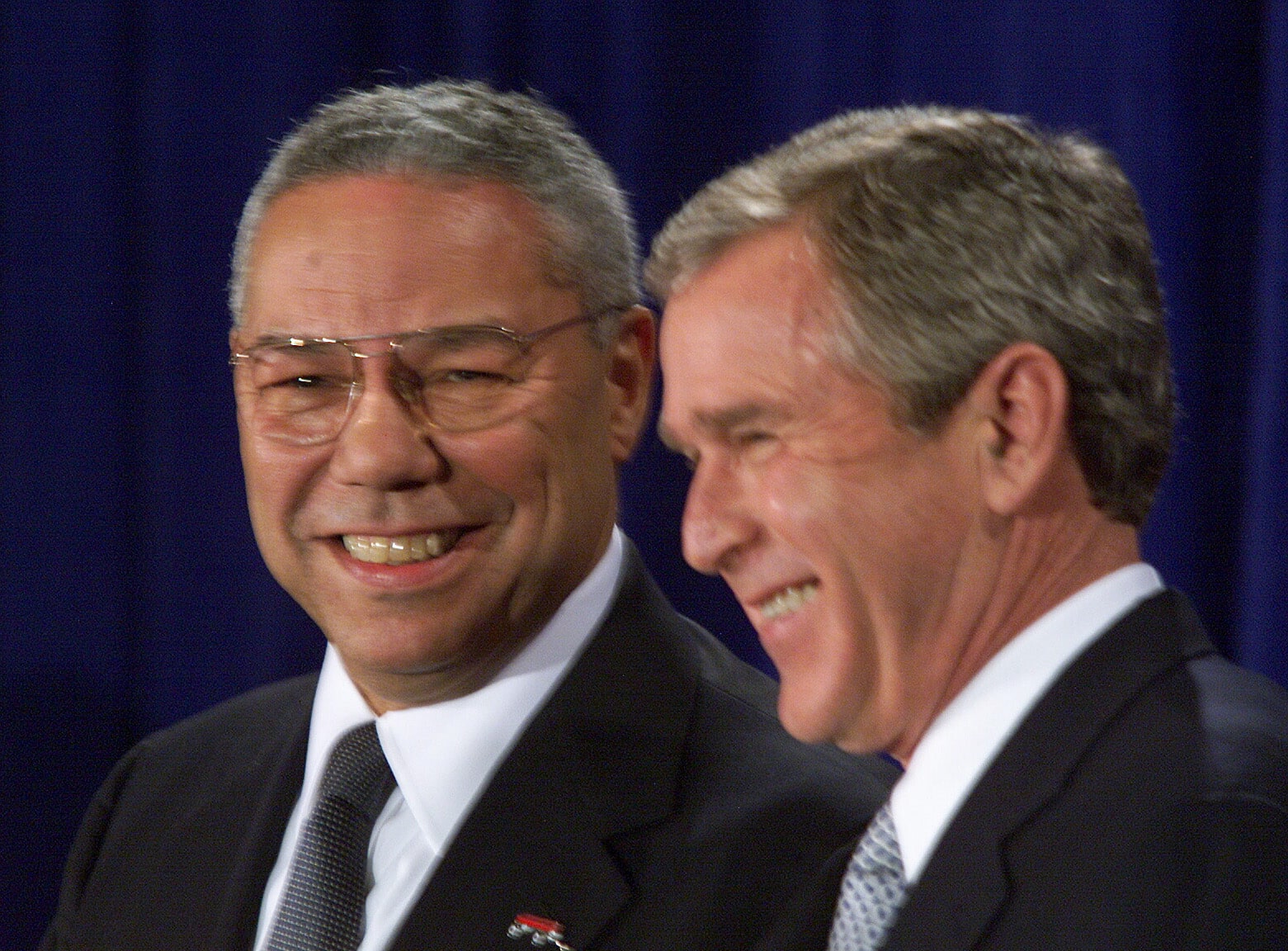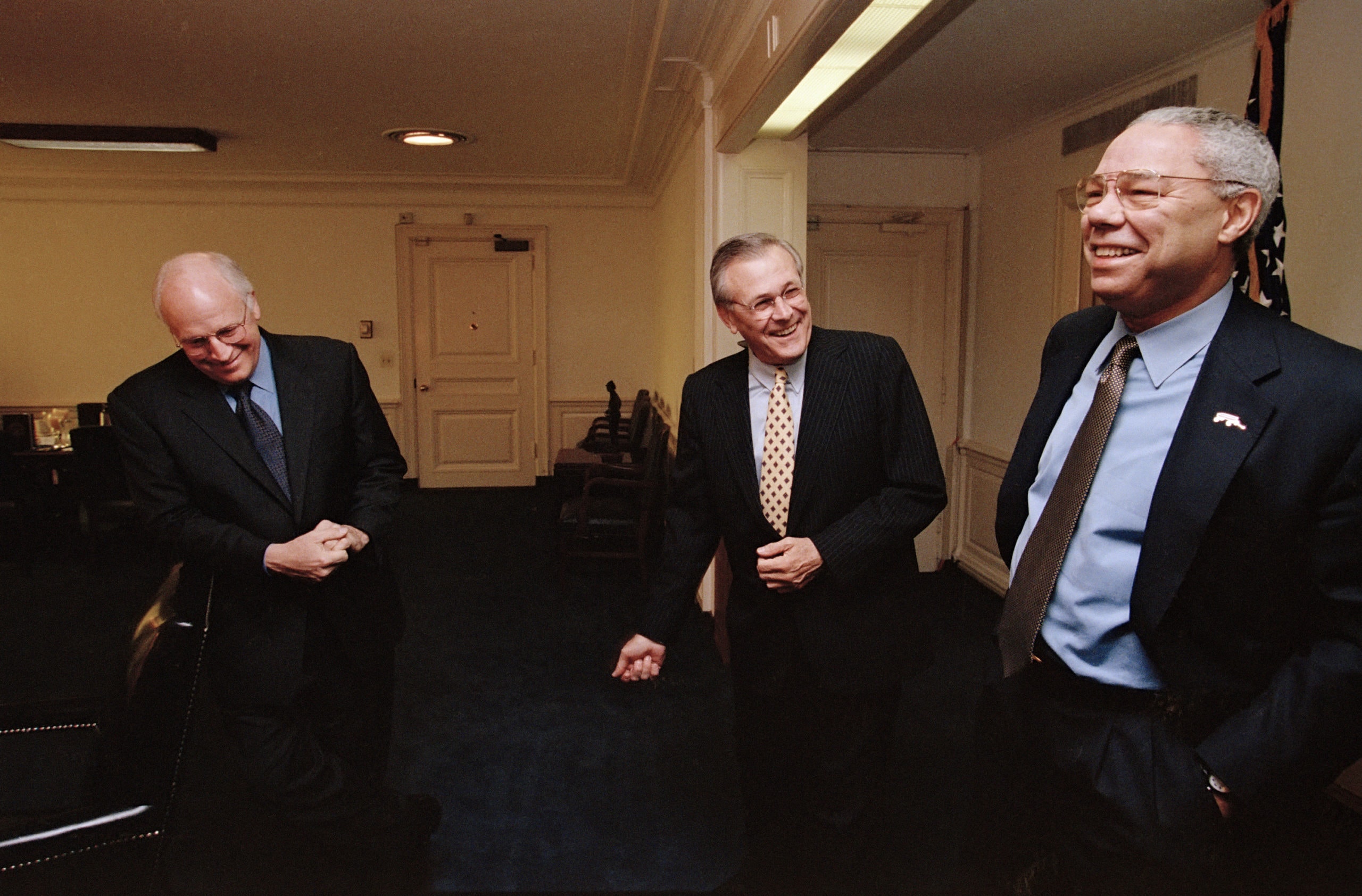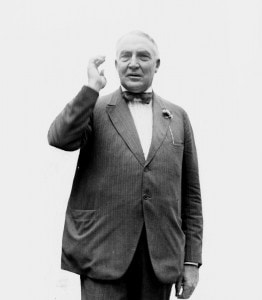WASHINGTON– SEPT 8:President Ford in Bill Timmon’s office at the White House moments after pardoning Richard Nixon, Sept. 8, 1974 (David Hume Kennerly)
Search Results for: nixon
General Colin Powell: Soldier & Statesman
“First in war, first in peace, and first in the hearts of his countrymen.”
Henry Lee’s eulogy honoring General George Washington could well have been written for General Colin Powell.

Our paths didn’t cross in Vietnam where he pulled two tours, the first in 1962-63, and then in 1968. During that second deployment Major Colin Powell was decorated for bravery after he survived a helicopter crash and single-handedly rescued three others from the burning wreckage, including his commanding general.
I first got to know Powell in 1991 when he was chairman of the JCS shortly after the U.S. launched Operation Desert Storm against Iraq after they invaded Kuwait. I flew with him and Secretary of Defense Dick Cheney to Saudi Arabia where they met with CENTCOM commander General Norman Schwarzkopf in the war room in Riyadh. Schwarzkopf, like Powell, was another Vietnam vet who had also been wounded several times in combat. At this point the Allied forces had been bombarding the Iraqi forces from the air, and Cheney and Powell’s trip was the prelude to the ground invasion that would free Kuwait from Saddam Hussein’s military occupiers.

Cheney and I knew each other since working closely together in the Ford White House, and he had invited me to accompany them on the Saudi trip. But Powell was new to me. I’m always comfortable around people who shared the Vietnam experience, and Powell was no exception. We immediately hit it off, and even managed to compare a few war stories on that long ride as only those who’ve been through the combat wringer can do. He was confidant, easy-going, and had a terrific sense of humor. Most people who rise through the ranks of the military tend to be rather humble and modest, and Powell was no different. That’s also where he started referring to me as “Kennerly,” and it stuck. Even George W. Bush picked up on it.
During the trip to Saudi Arabia we also visited a secret air base at an “undisclosed location.” Let’s just say it was out in the desert, and in Saudi that covers a lot of territory. I photographed Cheney and Powell addressing the troops framed by warplanes. It was a very dramatic setting, and a visual prelude to the upcoming ground war.

When we returned to D.C., Cheney and Powell met with President George H.W. Bush to discuss battle plans, then appeared in the Rose Garden for a press conference. The picture typifies how the same people never seem to go away until they pass away.

It was a who’s who, who was who, and who would be who of American politics moment. (left to right), National Security Advisor Brent Scowcroft, also NSC advisor to President Gerald Ford. CIA Director Robert Gates, future Secretary of Defense under Presidents George W. Bush and Barack Obama. Secretary of Defense Dick Cheney, former White House chief of staff for President Gerald R. Ford, congressman, and later Vice President of the United States for President George W. Bush. Vice President Dan Quayle, was a U.S. Senator, and congressman. Secretary of State James Baker, former White House chief of staff and Treasury Secretary for President Ronald Reagan, and later chief of staff for Bush 41. President George H.W. Bush, Reagan’s vice president, CIA Director for Ford, U.S. Ambassador to the UN for Nixon, and congressman. Chairman of the Joint Chiefs of Staff Gen. Colin Powell, NSC advisor to President Reagan, would become Secretary of State for President George W. Bush. Whew!
Two years later, and during his final months as Chairman of the Joint Chiefs, LIFE Magazine assigned me to photograph Powell before he retired from the Army. One of my prized possessions, now in my archive at the Center of Creative Photography at the University of Arizona, is a letter from Powell essentially agreeing to my proposal, but I had to negotiate the terms of my access. He was no pushover, but it ended up working out.


The highlight of my coverage was a trip that Powell made to Somalia to visit U.S. troops. They were there to help starving people whose lives had been torn apart by war. The operation was Powell’s baby. To underscore that point Powell visited a hospital and held up a newborn child whom the mother named “Colin” in appreciation for America’s help. It might go down as one of the more unusual situations I have photographed, and Powell seemed to enjoy it.

General Powell loved his troops and they loved him. He was a rock star to them. They all wanted to have their photo taken with him, and I obliged as many as I could. Powell seemed happiest when he was around his fellow soldiers, and I could see why they liked him. He wasn’t asking any of them to do something he hadn’t already done.

We also paid a visit to the USS Wasp, an amphibious assault ship that was cruising of the coast of Somalia in support of the operation. Powell addressed the sailors and Marines on board, and received cheers and applause.

I caught a quiet moment of him on the ship as he reviewed some documents.

Back in the states I got a look at Powell the grandfather as he raced across the lawn near his quarters at Ft. Myer with his delighted grandson. He told me that one real regret he had was never getting enough time with his family.

On the last day of the assignment I rode with Powell on his helicopter back to the Pentagon. As he looked out the window I had a feeling that there was more in store for him after he left the military.
Flash forward two years later. 1995. People in both political parties were encouraging Powell to run for president. I wrote Powell a letter encouraging him to jump in and also telling him that if he did I would like to cover his campaign. I added that if he won I would also happily become the chief White House photographer for the second time. But alas, he didn’t go for it, citing a lack of passion for politics. He later told me he absolutely would have had me along for the ride. My close-up observation of thirteen presidential campaigns is that most people who run for president would step over their mother’s body to get to the White House. Powell (and Gerald Ford) were not among them.

But Powell was not out of the game. On Dec. 16, 2000, President-elect George W. Bush named Powell as his choice for Secretary of State, the first Black person to achieve that position. At the announcement in Crawford, Texas, Powell thanked Bush for not holding the ceremony at his nearby ranch and joked, “I’m from the South Bronx,” he said, “and I don’t care what you say, those cows look dangerous.” Bush picked Condoleezza Rice as his NSC adviser. She would replace Powell as Secretary of State four years later.
Powell’s relationship with VP Dick Cheney and Secretary of Defense Donald Rumsfeld was not always warm and fuzzy, but early-on they appeared to get along fine. On one occasion I was with them in Rumsfeld’s office at the Pentagon when Powell became the butt of a joke, and laughed along with them. It was genuinely good natured at that moment, but wasn’t always that way. However, in a statement issued by former VP Cheney after Powell died he said, "I'm deeply saddened to learn that America has lost a leader and statesman. General Powell had a remarkably distinguished career, and I was fortunate to work with him. He was a man who loved his country and served her long and well."

The graceless Donald Trump on the other hand said, "Wonderful to see Colin Powell, who made big mistakes on Iraq and famously, so-called weapons of mass destruction, be treated in death so beautifully by the Fake News Media. Hope that happens to me someday. He was a classic RINO, if even that, always being the first to attack other Republicans. He made plenty of mistakes, but anyway, may he rest in peace!" Congresswoman Liz Cheney, the former Vice President’s daughter, called Trump’s words “pathetic garbage.”
Seven months after Powell became Secretary of State TIME Magazine ran a cover story with the headline, “Where Have You Gone Colin Powell?” The story accused him, among other things, of, “leaving shallow footprints.” It was pretty much a hose job, and Powell was pissed. The day it came out he pulled me aside to vent about the story. (I was working for Newsweek then, fortunately for me). I said, “Who cares, they ran a great photo of you on the cover, and that’s all anyone will remember.” Three days later I ran into him again, and he was wearing a big smile. “Goddammit Kennerly, you were right! Everyone told me how great that story was, they must not have even read it.” I said, “General, you have just discovered the power of photography, so you better treat me nice.” He laughed. Three days later was September 11, 2001, and that Powell story was instantly forgotten.
What’s not ancient history is Powell’s speech at the United Nations on Feb. 5, 2003. In it he tried to convince them and the rest of the world that Iraq had weapons of mass destruction as a pretext for war. It turns out they didn’t, but the war did. Powell told Barbara Walters in 2005 after he left the Bush Administration, that the speech was a “blot” on his life. He said “It will always be part of my record. It was painful. It’s painful now.”
Three years ago as I was walking into Union Station in Washington, D.C. I heard someone yell, “Hey Kennerly!” I turned around and there was General Powell standing by his car after dropping his wife Alma off. We shared a hug. That was the last time I saw him.
General Colin L. Powell. A good guy. I will miss him.


Final farewell. General Colin Powell is carried from the Washington National Cathedral by members of his beloved U.S. Military after his funeral service, November 5, 2021
President Ford Dispatches Gen. Weyand on a Mission to Vietnam
President’s Photographers at National Archives
I joined official presidential photographers David Valdez (Bush 41), Sharon Farmer (Clinton), and Eric Draper tonight at the National Archives for a panel moderated by former Clinton press secretary Dee Dee Myers. It was a great evening before a sold out crowd, and I think Sharon should run for mayor of DC, she is the best ambassador this city has ever seen! We will always miss our departed colleagues Yoichi Okamoto (Johnson), Ollie Atkins (Nixon) and Mike Evans (Reagan).

Presidential photographers Sharon Farmer and Eric Draper and moderator Dee Dee Myers at the National Archives.
A0628-07
The concern after pardoning Nixon shows as the president paces around Bill Timmons’ office
A0619a-6A 600 dpi from neg
Warren Harding Revealed
As part of my presentation at the Richard Nixon Presidential Library in Yorba Linda last night I premiered some rather extraordinary photos I unearthed at the Library of Congress. They show a 1920 photo shoot with Warren G. Harding in his backyard before he became president, and I’m guessing were for campaign purposes. At first I thought the photographer used a white backdrop, but it seems they were added afterwards on the negative or a copy neg of the photos. The pictures show Harding posing in various positions as if he’s speaking. Pretty interesting stuff, and shows an early awareness of the power of political photography. It also shows the less stuffy side of the Ohio Republican who became president a year later in 1921.

Warren Harding with background added

Warren Harding political pose

Harding speaks for the still camera


Warren Harding political poseur













